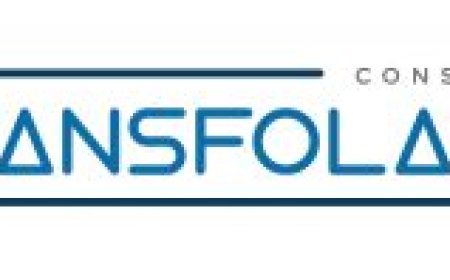The Ultimate Guide to Business Loan Options: Financing
The Ultimate Guide to Business Loan Options: Financing Your Venture Starting and growing a successful business often requires access to

The Ultimate Guide to Business Loan Options: Financing Your Venture
Starting and growing a successful business often requires access to capital, and business loans can be a crucial tool in your financial arsenal. Whether you're a budding entrepreneur or an established business owner, navigating the world of business loan options can be daunting. In this comprehensive guide, we'll explore the diverse range of financing solutions available, their pros and cons, and how to choose the right fit for your business.
Understanding the Basics of Business Loans
A business loan is a form of financing that allows you to borrow money from a lender, such as a bank, credit union, or alternative lending institution, to fund your business operations, expansion, or specific projects. These loans typically come with a set repayment schedule, interest rates, and terms that you'll need to adhere to.
The primary purpose of a business loan is to provide the necessary capital to support your business's growth and development. This can include funding for purchasing equipment, inventory, real estate, or even covering operational expenses during periods of low cash flow. By leveraging a business loan, you can access the resources you need to take your company to the next level.
Types of Business Loan Options
The world of business loans is diverse, with a wide range of options to choose from. Let's explore the most common types of business loan options:
Traditional Bank Loans
Traditional bank loans are one of the most well-known and widely used business financing options. These loans are typically offered by commercial banks, credit unions, and other financial institutions. Bank loans can provide a significant amount of capital, often with longer repayment terms and lower interest rates compared to other options.
To qualify for a traditional bank loan, you'll typically need to have a strong credit history, a solid business plan, and collateral to secure the loan. The application process can be more rigorous, with extensive documentation and financial information required. However, if approved, a bank loan can offer stability and predictability in your financing needs.
SBA Loans
SBA (Small Business Administration) loans are a type of government-backed business financing that can provide more favorable terms and conditions compared to traditional bank loans. SBA loans are partially guaranteed by the U.S. Small Business Administration, which helps mitigate the risk for lenders and makes it easier for small businesses to access capital.
There are several types of SBA loan programs, including the 7(a) loan program, the 504 loan program, and the Microloan program. Each program has its own eligibility requirements, loan amounts, and intended uses, so it's essential to research and understand the options that best fit your business needs.
Business Lines of Credit
A business line of credit is a flexible financing option that allows you to access funds as needed, up to a pre-approved credit limit. This type of loan can be particularly useful for managing cash flow fluctuations or covering short-term expenses. You only pay interest on the amount you borrow, and you can draw from and repay the line of credit as needed.
To qualify for a business line of credit, lenders will typically consider your business's revenue, credit history, and overall financial health. The application process is often less extensive than a traditional term loan, making it a convenient option for businesses with immediate financing needs.
Equipment Financing
Equipment financing is a specialized type of business loan that is used to purchase or lease essential equipment for your business operations. This can include machinery, vehicles, computers, or any other necessary equipment. The equipment itself serves as collateral for the loan, which can make it easier to qualify compared to traditional loans.
Equipment financing can be a practical solution for businesses that need to acquire new or upgraded equipment to remain competitive and efficient. Lenders often offer flexible repayment terms and competitive interest rates, making it a viable option for businesses of all sizes.
Invoice Financing
Invoice financing, also known as accounts receivable financing, allows you to access the cash tied up in your outstanding invoices. This type of loan can be particularly useful for businesses that have a long accounts receivable cycle or experience cash flow challenges due to delayed payments from clients.
With invoice financing, you can receive a percentage of the value of your outstanding invoices, typically around 80-90%, upfront. The lender will then collect the payment directly from your clients and remit the remaining balance to you, minus any fees. This can provide a much-needed infusion of cash to cover expenses and maintain operations.
Merchant Cash Advances
A merchant cash advance (MCA) is a type of alternative financing that provides a lump sum of capital in exchange for a percentage of your future credit card or debit card sales. This option can be beneficial for businesses with high credit card transaction volumes, as it does not require traditional collateral or a lengthy application process.
MCAs work by the lender providing an upfront payment, which is then repaid through a percentage of your daily or weekly credit card or debit card sales. This can be a quick and convenient solution for businesses that need immediate access to funds, but it's important to carefully consider the fees and repayment terms to ensure it's the right fit for your business.
Crowdfunding
Crowdfunding has emerged as a popular alternative to traditional business loans, allowing entrepreneurs to raise capital from a large pool of individual investors or backers. Through online crowdfunding platforms, businesses can pitch their ideas, products, or services to a wider audience and secure funding in the form of loans, equity investments, or rewards-based contributions.
Crowdfunding can be a valuable option for businesses that are in the early stages of development, have a unique or innovative product, or are looking to test the market's interest before pursuing other financing options. The success of a crowdfunding campaign often depends on the strength of your pitch, the size of your network, and the appeal of your offering.
Factors to Consider When Choosing a Business Loan
When selecting a business loan option, it's essential to consider several key factors to ensure you choose the right fit for your business. Here are some important considerations:
Loan Amount and Repayment Terms
Determine the amount of capital you need to achieve your business goals and how much you can comfortably repay. Consider the loan's repayment schedule, including the length of the term and the frequency of payments. Longer repayment terms may result in lower monthly payments, but you'll ultimately pay more in interest over the life of the loan.
Interest Rates and Fees
Carefully review the interest rates and any associated fees, such as origination fees, closing costs, or prepayment penalties. These can significantly impact the overall cost of the loan and should be factored into your financial planning. Compare offers from multiple lenders to find the most favorable terms.
Collateral and Guarantees
Some business loans may require collateral, such as real estate, equipment, or other assets, to secure the financing. Additionally, lenders may request personal guarantees from business owners. Understand the implications of these requirements and how they could affect your personal and business assets.
Eligibility Criteria
Each lender will have its own set of eligibility criteria, which may include factors like your business's credit history, time in operation, revenue, and industry. Ensure that you meet the lender's requirements before applying to avoid wasting time and resources.
Application Process and Timing
The application process can vary significantly between different loan options. Traditional bank loans often require extensive documentation and a longer approval timeline, while alternative financing solutions may have a more streamlined application and faster funding. Consider your immediate financing needs and choose an option that aligns with your timeline.
Case Studies and Examples
To illustrate the practical application of business loan options, let's explore a few real-world examples:
Case Study: Expanding a Retail Business with a Bank Loan
John owns a successful local clothing store and wants to expand his business by opening a second location in a nearby city. He applies for a traditional bank loan, providing a detailed business plan, financial statements, and collateral in the form of his existing store's equipment and inventory. The bank approves John for a $500,000 loan with a 5-year repayment term and a fixed interest rate of 6.5%. With the additional capital, John is able to secure a prime retail space, purchase new inventory, and hire additional staff to manage the expansion. Over the next few years, the new location becomes a thriving part of his business, contributing significantly to his overall revenue and growth.
Case Study: Financing Equipment Upgrades with Equipment Financing
Sarah owns a small manufacturing company that produces specialized tools for the construction industry. Her existing equipment is outdated and inefficient, leading to increased downtime and higher maintenance costs. Sarah researches equipment financing options and secures a $250,000 loan to purchase new, state-of-the-art manufacturing machinery. The loan is secured by the equipment itself, and the repayment terms are structured over 4 years with a 7% interest rate. The new equipment immediately improves Sarah's production efficiency, reducing operational costs and allowing her to take on more orders. Over time, the increased revenue and reduced expenses generated by the equipment upgrades more than offset the cost of the loan, enabling Sarah to grow her business and remain competitive in the market.
Case Study: Bridging Cash Flow Gaps with Invoice Financing
Lisa runs a professional services firm that provides consulting and IT support to a diverse client base. She often encounters challenges with delayed payments from clients, which can disrupt her ability to meet payroll and other operational expenses. To address this issue, Lisa explores invoice financing options and secures a line of credit that allows her to access up to 85% of the value of her outstanding invoices. This provides a reliable source of working capital to cover expenses while she waits for client payments to come in. The flexibility of the invoice financing solution enables Lisa to maintain a healthy cash flow and avoid any potential disruptions to her business operations.
Tips for Securing the Best Business Loan
To maximize your chances of securing the most favorable business loan, consider the following tips:
- Establish a Strong Business Credit Profile: Work on building and maintaining a solid business credit history, as this will be a crucial factor in the loan approval process.
- Prepare a Comprehensive Business Plan: Develop a detailed business plan that outlines your company's financial projections, growth strategies, and how the loan will be used to support your objectives.
- Shop Around and Compare Offers: Reach out to multiple lenders, including banks, credit unions, and alternative financing providers, to compare interest rates, repayment terms, and overall loan costs.
- Optimize Your Loan Application: Ensure that your loan application is complete, accurate, and presents your business in the best possible light. Provide all required documentation and be prepared to answer any additional questions from the lender.
- Negotiate Favorable Terms: Don't be afraid to negotiate with lenders to try and secure more favorable interest rates, repayment schedules, or other loan terms that better suit your business needs.
- Manage Loan Repayments Responsibly: Once you've secured the loan, make timely payments and maintain open communication with your lender. This will help you build a positive credit history and potentially open the door to future financing opportunities.
Conclusion
Navigating the world of business loan options can be a complex and daunting task, but understanding the various financing solutions available can be a game-changer for your business. By carefully evaluating your needs, exploring the pros and cons of each loan type, and following best practices for securing the best terms, you can unlock the capital necessary to fuel your business's growth and success.
Whether you're seeking a traditional bank loan, an SBA-backed financing solution, or an alternative lending option, the key is to find the right fit for your unique business requirements. By doing your research, preparing a strong application, and negotiating effectively, you can position your company for long-term financial stability and achieve your ambitious goals.
KEYWORDS: business loan options, business financing, small business loans, commercial loans, alternative lending, SBA loans, equipment financing, invoice financing, merchant cash advance, crowdfunding
What's Your Reaction?
 Like
0
Like
0
 Dislike
0
Dislike
0
 Love
0
Love
0
 Funny
0
Funny
0
 Angry
0
Angry
0
 Sad
0
Sad
0
 Wow
0
Wow
0
































































